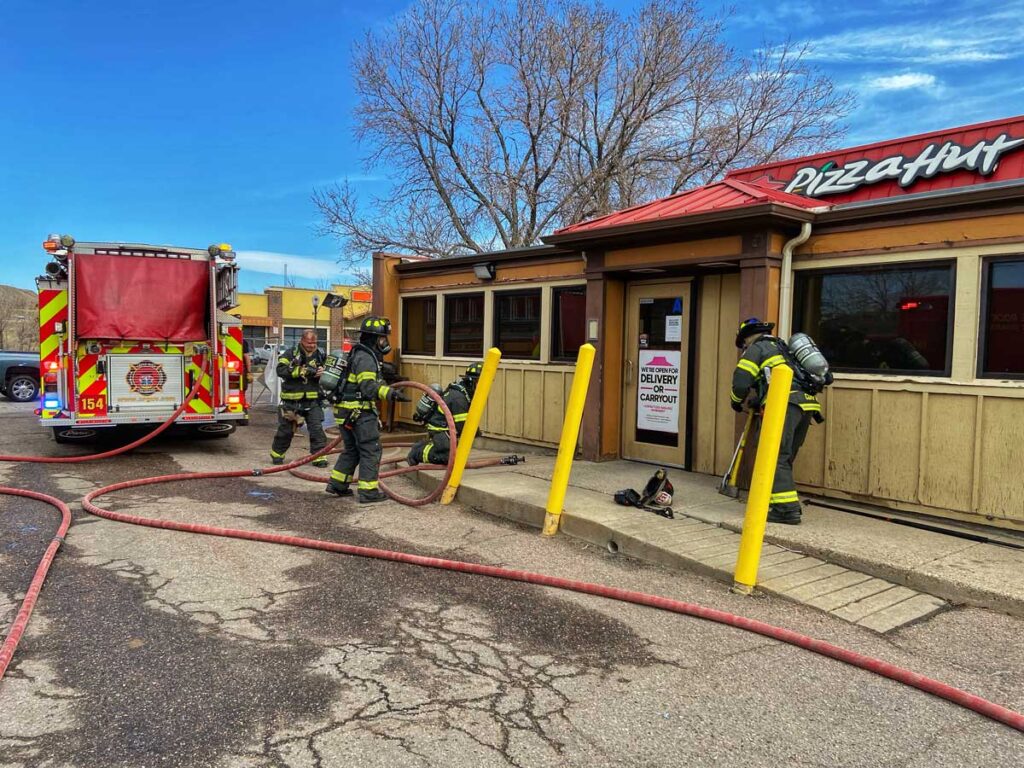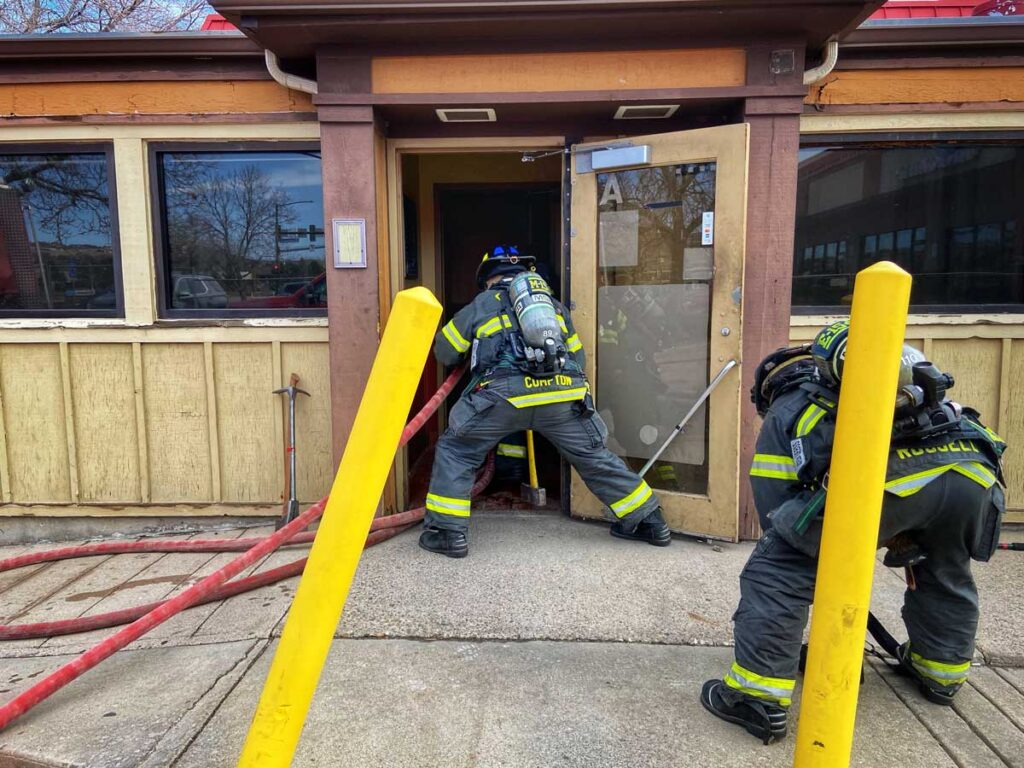By Oren Bersagel-Briese
Photos by author
The tactics of the first-in company are squarely at the intersection of firefighter safety, department policy, training, and citizen need. But if you are waiting for the on-scene moment that the intersection arrives, you are already way behind the needs of the incident, and your crew will be playing catch up with the actions that are required.
- Building Better Company Training
- Crafting a Small Unit Vision Statement
- Fireground Commander’s Intent: Coordinated Actions for Mission Success
- Introspection and the Company Officer
Navigating the needs of the citizens, the department, and your crew can be a challenging series of decisions, but it is all rooted in the culture of your crew. From Latin, “culture” means to cultivate or grow, and the most successful way that you can cultivate your crew’s mindset and actions is through intentionality.
Let’s focus on three ways to incorporate intentionality into your daily crew life, including company-level training, a mission statement, and which policies you choose to focus on.
Guidelines/Policies
In my organization, we have about 600 pages of guiding documents that formulate the infrastructure for how we act, what we are going to do, and when we are going to do it. That is a lot of information for our firefighters to remember on the emergency scene, and our leadership failure is assuming that all 600 pages have the same priority. This simple fact is that not all policies exist for emergency scenes–many are in place for reference or because legal systems have dictated that they should be there.
As we looked into ways to take that 600 pages of information and make it digestible for all front-line responders, we found a system where we assigned each document a color code of red, yellow, or green. Red documents are ones that we want everyone on the line to know completely because violating them could have serious life or career ramifications (think: structure fire response). Yellow documents are ones that we want our members to understand the bulk of the operational guidelines, but can reference the information within them when needed (think: technical rescue response). Finally, green documents exist simply as a reference and we’d like our personnel to know that they exist, but generally do not need to be committed to memory at all (think: car seat technician certification requirements).
In this review, the bulk of our documents ended up in the yellow and green areas. But this doesn’t have to happen at the organization level: our agency’s success with this started at the company level, where we were trying to de-cloud the amount of information we were expecting our members to know. As officers, if you can to focus your member’s attention on those red documents that dictate incident action, you’ll find that the crew will be less encumbered by the paperwork side of our profession.
Mission Statements
At the firefighter level, these statements are often misunderstood because the organization often misapplies the concepts that give them their success. Commonly, an organization’s mission statements are too long, too confusing, and contain too many different thoughts. However, at the company level, perhaps we can rename these “intention statements” and use them to our collective advantage.
Following the terrible tragedy that killed three astronauts on the Apollo 1 crew, Gene Krantz, flight director in Mission Operations, held a meeting of all senior-level staffers responsible for the mission. During that meeting, he stated that “when you leave this meeting today, you will go to your office and the first thing you will do there is to write ‘tough’ and ‘competent’ on your blackboards. It will never be erased…These words are the price of admission to the ranks of Mission Control.”
Mr. Krantz wasn’t trying to create a unique statement that would satisfy the investigators of the incident. He was using this platform to clarify the intentions of the people that worked in Mission Control. In its simplicity, it focused those members and allowed them to understand the weight of the responsibility that they assumed.
A simple formula for creating an intention statement for your crew might look like this: The (crew name) delivers (what service) to (customers) so they can (customer value). Filled out, this could read “The crew of Station 151-C takes aggressive action on emergency scenes so the citizens of Castle Rock will have their best possible outcome.”
When developed to be a simple and direct message, this type of statement can also serve as the framework for how a crew will act, what they will do, and who they will do it for. Moreover, it provides an opportunity to hold each member’s actions accountable to the statement and set a clear understanding of your priorities.
Company-Level Training
While an appropriate focus on policy and intention statements will serve as the foundation, the launching point for a great crew is through training. Training with intention is different than training to train, and the results will generate different energy within the crew and different actions on the incident scene.
During the height of the pandemic restrictions, our department’s direction was that crews were able to come train at the drillground for only one hour at a time. This time limitation was in direct conflict with how we’ve traditionally approached training, which largely centered on companies coming to training, running a few evolutions, cleaning up, and returning to service over the span of a couple of hours.
Sixty minutes for a crew to train and return to service is a remarkably short window and challenged almost everything we knew about successful training. However, this time constraint provided us with a unique opportunity to rethink how training can be done and we discovered a design that has changed how our department trains and operates. We stumbled on something we call “20s Drills,” where we spend 20 minutes training, 20 minutes cleaning up, and 20 minutes talking and hanging out.
Incorporating the cleanup time into the training time design isn’t a novel concept, but it seems to be one that the fire service struggles with for some reason. We often find ourselves spending hours after the training just returning rigs or ourselves to ready status, and this can be a moral barrier to enjoyable training sessions. Crews being able to leave the drillground intact and ready to respond without having to spend significant time resetting has been a success in and of itself.
But the real value in this style of training comes from the design that goes into making a good drill occur in just 20 minutes. Think about old-school Twitter rules that limit any post to 140 characters: if you want to express a complete thought within that limitation, you have to cut the fat, focus the message, and be very intentional about each word selection. Designing a drill that can be done in 20 minutes is the same thing: cut the fat, focus the message, and be very intentional about each piece of the design.


To help accomplish this mission, we introduced the idea of focusing on those red policies and creating decision points into those 20-minute drills. These decision points have allowed the sessions to change from a simple evolution into observable action by the crews that can generate good tactical conversation. For example, we leveraged a pizza chain restaurant that was being torn down for one of these trainings. We know through places like the Firefighter Rescue Survey that search and extinguishment tactics need to be done in parallel, and preferably not in series. With this knowledge incorporated into our training plan, the crews were presented with an initial arrival drill where they found a fire in the kitchen area and reports of a missing employee.
While this isn’t a particularly complex drill in nature, it does provide our officers an opportunity to work in a commercial environment and have to make decisions on crew action relating to two critical incident priorities. Fire attack or search or both at the same time? All in or does the engineer stay outside? Right or left? Most importantly, why and for whom? The conversations that are generated by these types of intentional decision points can allow you as an officer to drive the operational objective and the citizen-first mindset of your crew.

In another drill, crews were presented with a dumpster fire. Upon arrival, they discovered that it was against a house with the homeowner last seen going back into the house. While this drill has certainly been done thousands of times across the country, the time limitation with the decision point discussion really focuses the efforts of the crew on actionable takeaways.

Of course, not all of these have to be initial arrival drills on a fire. Additional iterations of this have looked like being assigned to set up a low-angle haul system for victim removal, ground monitor operations on a defensive fire, thermal imager familiarization, a rapid extrication from a confined space environment, and equipment usage.
There are two key elements to consider when putting together trainings for your crew or department. First, generally speaking, firefighters don’t want to look bad in front of other firefighters. Additionally, while there is a lot (and potentially really good learning) that comes from failure, we want our crews to leave the drillground with a slide deck full of successful outcomes to reference on their next incident.
In addition to the design of the evolution, one thing that we’ve found to be very successful is to let the crews know what drill they’ll be coming to with enough advanced notice that they can train on the related skills. We don’t give them the answers to the test per se, but we’ll communicate that the drill might be about “big water.” In doing this, we are allowing the members to come to the training with their own intentional actions incorporated, having already worked on certain skills and thought through possible tactical needs. This has generated many additional hours of training at the individual or company level—
all self-motivated to ensure that they are professionally prepared to train.
The non-tangible value that comes from this level of intention going into training cannot be understated. There are benefits ranging from operational success to crew morale, and we all understand how those can be parlayed into your crew doing even greater things on the fireground.
Growing and cultivating your crew’s performance and mindset are not accidental outcomes, rather they are the results of very intentional actions. This intentionality takes work, thought, and discussion, but you’ll discover a crew that is more ready to navigate those difficult moments on the incident scene where seconds and actions matter.
Oren Bersagel-Briese is a 27-year member of the fire service, and is currently the division chief of Training with the Castle Rock (CO) Fire and Rescue Department. He has extensive teaching experience, is one of the founders of the Denver 9/11 Memorial Stair Climb, and is a member of the NFFF 9/11 Stair Climb Steering Committee.

